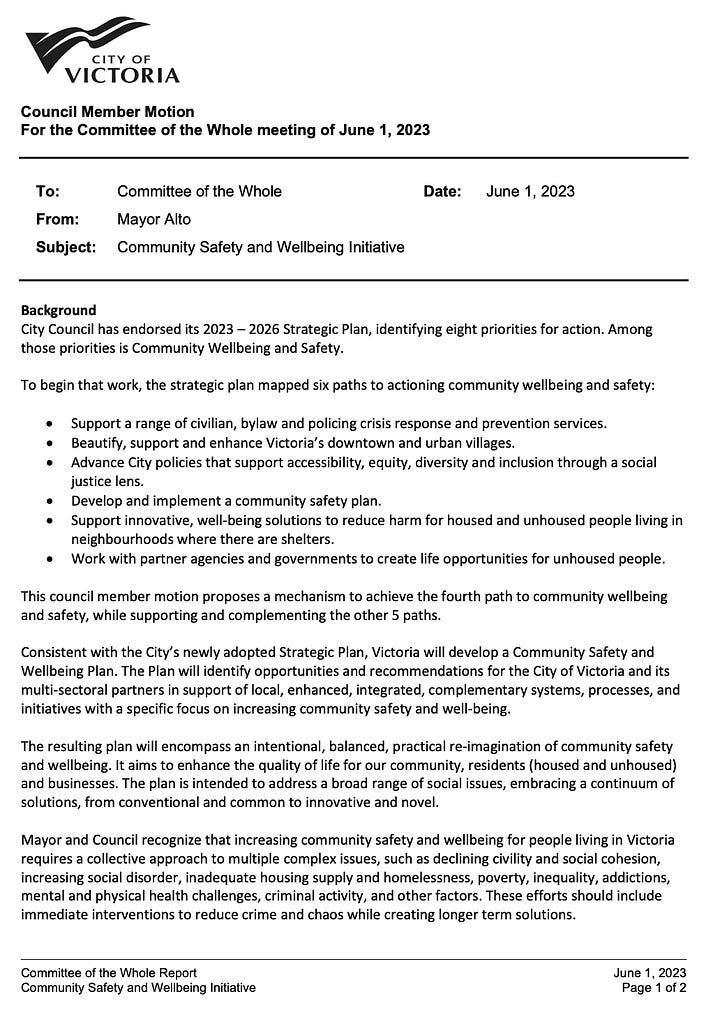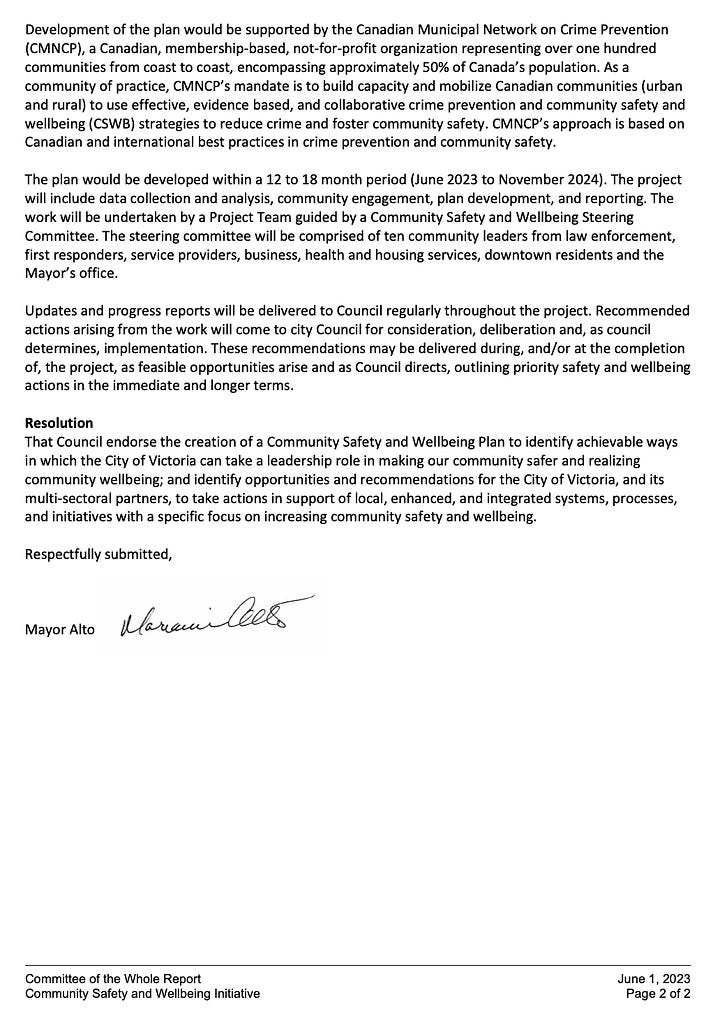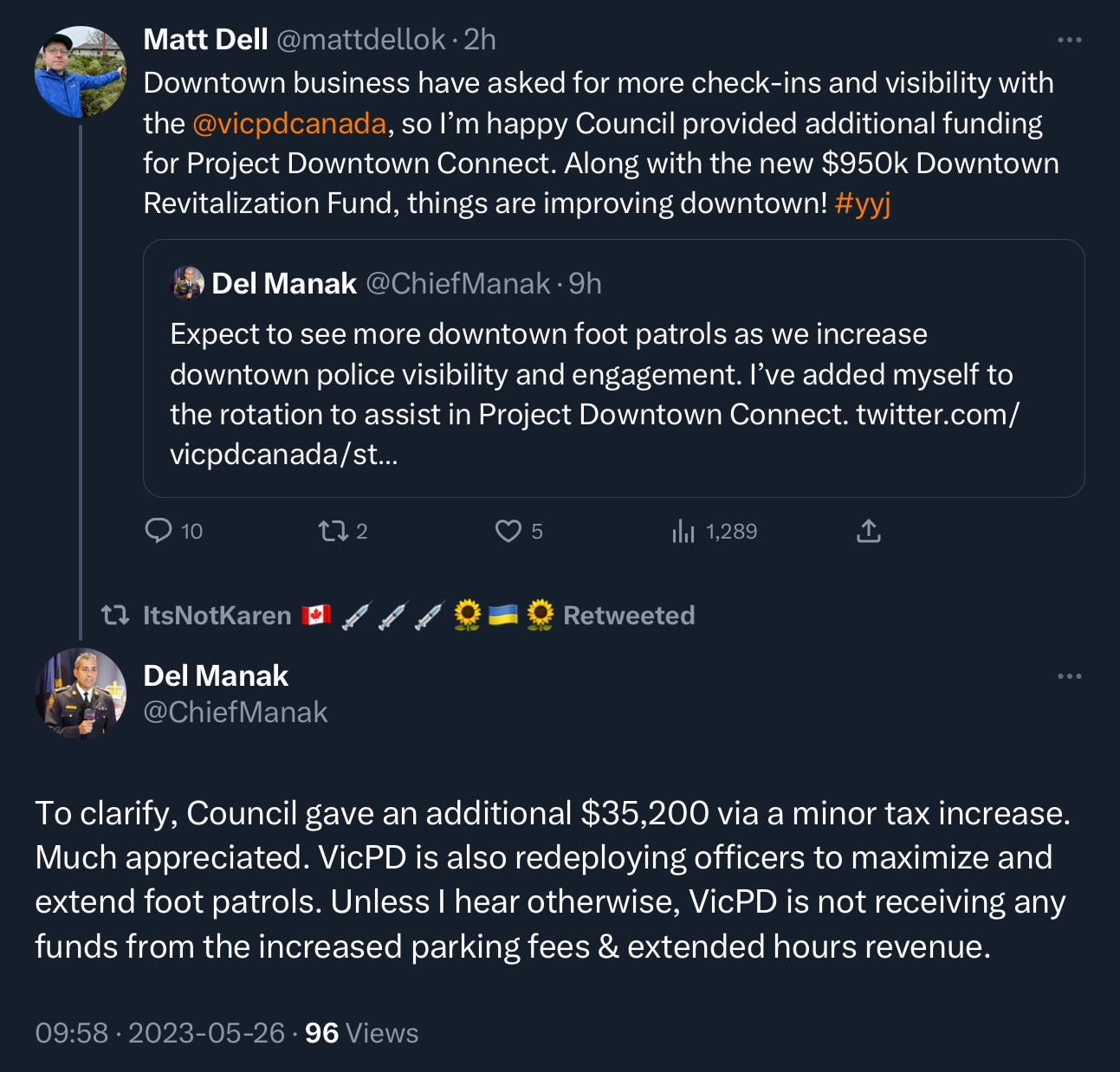Crime, Safety, Prevention and Revitalization
Conflating a perception of safety with high-level crime reduction programming

There was an interesting exchange that occurred on Twitter last week between Councillor Matt Dell and Chief of Police Del Manak. The subject was increased police patrols downtown and funding for the Downtown Revitalization Fund. Have a look below:
Chief Manak is correct to point out that the patrols are not related to the Downtown Revitalization Fund mentioned by Councillor Dell in his quote-tweet reply. Councillor Dell is correct to speak about the Downtown Revitalization Fund as being a means to improve the downtown core and contribute to community safety. Both men are in the same ballpark but they are not playing the same game— and this is an issue.
It is so much of an issue, in fact, that until we resolve it and work to establish more clear lines of understanding around what we are all talking about when we talk about community safety and crime, we are never going to truly address the root causes of the issue. This is just as much about good governance as it is about safety.
I completely understand that the topic of crime in Victoria is controversial. There are strong opinions on either side of the debate around whether or not crime is actually an issue within the city. Those who say there is an increase in crime point to a rise in anecdotal petty crime that is often not reported and therefore doesn’t show up in the statistics being presented by those who claim that crime is not on the rise. But in many ways this division is actually beside the point.
It does not matter whether crime is objectively on the rise or not. It matters how people feel— specifically, whether they feel safe or not. And as I’ve said numerous times on Twitter in the course of these sort of discussions, safety is a personal perception, it is not based on facts or statistical data. And we can say this confidently because regardless of whether crime is on the rise or not, a society that feels unsafe will act unsafe and will generate all of the same collective angst and fear that could lead to overall instability.
Those who say there is an increase in crime point to a rise in anecdotal petty crime that is often not reported and therefore doesn’t show up in the statistics being presented by those who claim that crime is not on the rise.
This is why it is so important for local governments to be aware of the general feelings and consensus among their populations. It doesn't take an actual rise in crime for people to feel unsafe or to feel like there is an element of societal decay that is going unchecked. It can be as simple as witnessing criminal activity in public without any consequence or means of reporting nearby. For many people, the sight of individuals smoking drugs in building vestibules and entrances is a dangerous sign of societal decay that drives them to question the effectiveness of the state in general. This is bad.
When we talk about crime and safety in our city the perception of safety is what we are most likely talking about. People do not see enough police downtown. They read stories daily of vandalism and arson and witness the very same when they do go downtown. While the solutions to this problem are complex, the causes are not nearly as complex to see and digest— they are all around us.
It is important that we understand what we are talking about because there is potential for misunderstanding to creep in when we talk about crime and safety issues. Take for example the tweet from Matt Dell earlier. The original tweet from Chief Manak was about an increase of patrols which is a measure in direct response to the perception of safety issue that I raised above. In response, Councillor Dell speaks about increasing funding and adds a line about the Downtown Revitalization Fund. And as I said in my opening, he is not wrong to link the fund to crime prevention and safety in general. But it completely misses the mark of Chief Manak’s program and tweet about it.
And this hasn’t happened in isolation.
During the Committee-of-the-Whole meeting of council yesterday, Mayor Marianne Alto presented a proposal for a Community Safety and Wellbeing Initiative. We will cover it more detail in a future newsletter but what is important to understand is that the initiative seeks crime prevention and reduction measures through data collection and reporting that will be guided by the Canadian Municipal Network on Crime Prevention (CMNCP). These are high-level measures and programs that would generate long term results.


On the face, the proposal seems completely reasonable (you can read more about what the CMNCP is all about in this report from the organization here). But I fear from the comments the Mayor and other Councillors made during the presentation of this piece of business we are heading down the path of conflating crime reduction and high level programming for addressing the very immediate and real perception of public safety issue that exists in our city at this very moment.
This is what drives the issue back to good governance. This is about the proper function of our society and how we address a very real issue facing our city. Conflating these issues and attempting to pass each off as a means of replying to the issue of safety perception will not result in good policy development and desirable outcomes. The problem will persist and the consequences will continue.




